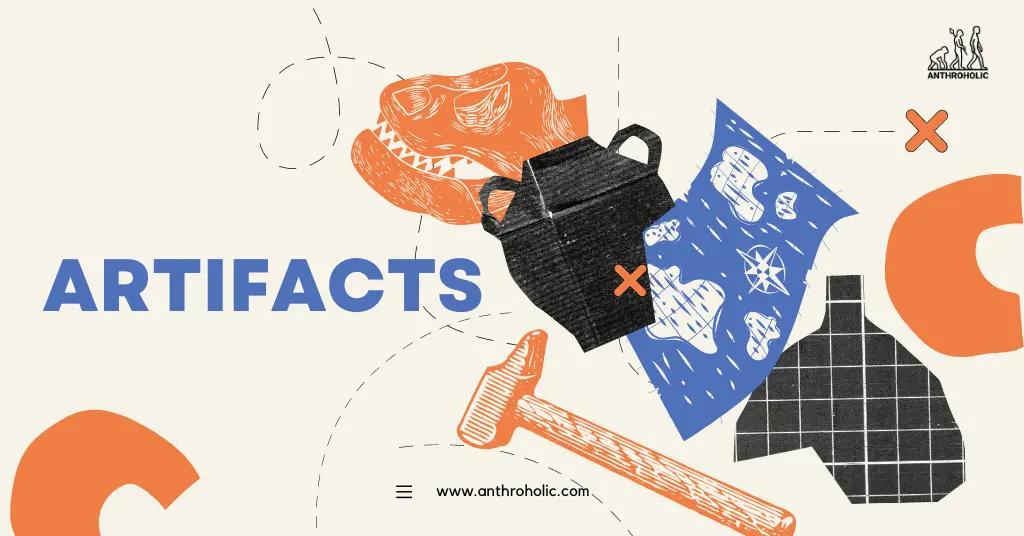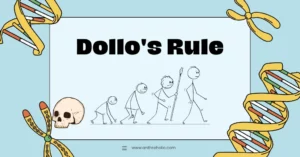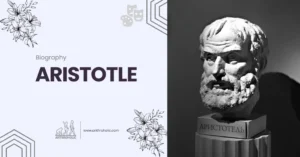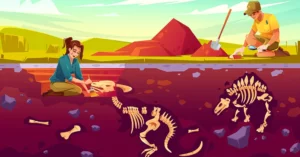AI Answer Evaluation Platform Live Now. Try Free Answer Evaluation Now
Artifacts
Artifacts are the tangible remains of past human activities, holding a wealth of information about our ancestors and their societies. Through careful analysis of artifacts, archaeological anthropologists shed light on social structures, cultural beliefs, economic systems, and technological advancements that have shaped the course of human history [1].

Definition of Artifact
In the realm of archaeological anthropology, an artifact is an object made, altered, or used by humans. Artifacts span a wide spectrum from stone tools to pottery fragments, from bone needles to ancient manuscripts [2]. These objects, often excavated from archaeological sites, serve as windows to past societies.
Classification of Artifacts
Artifacts are classified into three main categories:
- Diagnostic Artifacts: These are unique in their make or style, allowing for precise dating or cultural identification.
- Ecofacts: Natural objects, such as seeds, bones, or shells, that have been used by humans but not altered significantly.
- Features: Non-portable human-made objects, like hearths or postholes.
| Category | Examples |
|---|---|
| Diagnostic Artifacts | Pottery styles, coinage |
| Ecofacts | Animal bones, plant remains |
| Features | Architecture, kiln remains |
Significance of Artifacts
Artifacts are vital tools for archaeological anthropologists in deciphering the past for several reasons:
- Cultural Insights: Artifacts offer clues about the belief systems, social hierarchy, and daily routines of societies [3].
- Technological Progression: The sophistication and type of artifacts reveal technological advancements and knowledge [4].
- Chronological Dating: Certain artifacts help in dating archaeological sites, providing a timeline for historical events.
Artifact Analysis Techniques
Different methodologies are employed in artifact analysis, with the choice depending on the artifact type and research questions. Here are three prominent techniques:
- Typology and Classification: Artifacts are grouped based on shared characteristics. This classification aids in understanding cultural and chronological contexts.
- Use-Wear Analysis: Examines the wear patterns on artifacts to determine their function.
- Residue Analysis: Involves identifying any organic or inorganic residue left on artifacts, giving insight into their use.
These analytical processes enable archaeologists to delve into the socio-cultural and technological realms of past societies.
Technological Developments in Artifact Study
With the advent of advanced technology, archaeological anthropologists are now able to study artifacts in more profound ways.
- Radiometric Dating: Techniques such as Carbon-14 and Potassium-Argon dating enable more precise dating of artifacts and associated materials.
- Spectrometry: Techniques like X-ray fluorescence (XRF) and Neutron Activation Analysis (NAA) help identify the elemental composition of artifacts, revealing their origin and manufacturing processes.
- 3D Imaging and Printing: These technologies aid in the documentation, preservation, and replication of artifacts for research and educational purposes.
| Technology | Function |
|---|---|
| Radiometric Dating | Precise dating of artifacts |
| Spectrometry | Elemental analysis |
| 3D Imaging/Printing | Documentation and preservation |
Conclusion
Artifacts are more than mere objects; they are storytellers of our past. Their study continues to evolve with technological advancements, allowing for deeper insights into our ancestors. As we venture further into this fascinating realm of archaeological anthropology, we must navigate the associated challenges with respect for the cultural heritage these artifacts represent.
References
[1] Renfrew, C., & Bahn, P. (2012). Archaeology: Theories, methods, and practice. Thames & Hudson.
[2] Schiffer, M.B. (1987). Formation processes of the archaeological record. University of New Mexico Press.
[3] Hodder, I. (1991). Reading the past: Current approaches to interpretation in archaeology. Cambridge University Press.
[4] White, J.P., & Thomas, D.H. (1975). The effect of resource abundance on artifact diversity: A test of the “pithouse overkill” model. Journal of Anthropological Research.




